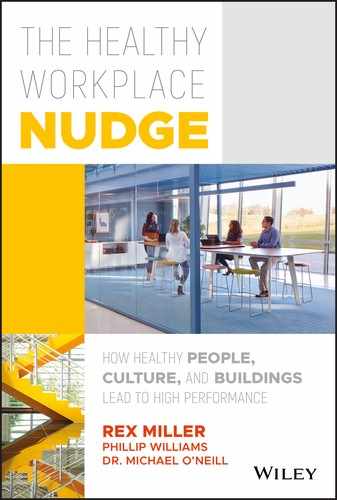Chapter 1
A Slow-Moving Storm: The Existential Threat to Business and the Economy
Sound managerial decisions are at the very root of their impending fall from industry leadership.
—Clayton Christensen, The Innovator's Dilemma
In the beginning, I thought our team came together to write a book. But, in fact, we were like those once described in a Cormac McCarthy novel: “They grouped in the road at the top of a rise and looked back. The storm front towered above them and the wind was cool on their sweating faces. They slumped bleary-eyed in their saddles and looked at one another. Shrouded in the black thunderheads the distant lightning glowed mutely like welding seen through foundry smoke.”1
Like that band of cowboys, our troupe stopped in the road when we saw the distant storm. We knew what it meant; our original purpose and destination no longer mattered. I saw the first flashes of lightning and heard the faraway muffled thunder when I met Dr. Michael Roizen at the Cleveland Clinic. Although it was distant, I could tell the storm carried deadly ferocity. For the first time in my life, I saw a true existential crisis. Before I give you a peek into that slow-moving storm, let me explain why and how we came to write this book.
A writer friend of mine was once embedded with a gaggle of reporters for a seven-day papal visit to a Middle Eastern country. In his first experience of being one of “the boys on the bus,” my friend's biggest surprise was what seemed like a total absence of press curiosity. He told me, “I expected to meet people who assumed nothing and probed everything. Surely, they would listen and ask questions thoughtfully and carefully. Instead, I saw journalists ignoring the subject of their coverage. They conducted loud cell phone calls, talked, ate, spilled drinks, swore, and stepped on people to get better positions, often as the pope was speaking!”
Let me assure you, that does not describe our approach. Curiosity drives MindShift.
We distrust the scripts and official announcements. We prefer to excavate the who, what, when, where, why, and how without the help of the authorities and their jackhammers. We agree with Steve Jobs: “It's more fun to be a pirate than to join the Navy.”2
That approach took us through three books; you hold the fourth. Our battle plan gathers 50 to 100 dissimilar, knowledgeable, strong, and gifted thought leaders. Then we move around the United States together, visiting innovative and sometimes radical outliers. We call those gatherings “summits,” but they're more like scavenger hunts. We grab relics, stories, honest research, and other artifacts and rush back to the cave for further analysis. Then we do it all over again a few weeks later.
We lead with our weakness.
Inexperience is our strongest asset. Because we know nothing, we have to be curious. So, we wear camo, distract the gatekeepers, build illusions, slip cash to the night security people, “borrow” reports, and hang out with insiders as well as outsiders. Think of us as the guys in Oceans 11. We embrace audacious goals, build daring plans, have a grand time, and knock over the Bellagio. Or something like that.
In the beginning, we called this project “Wellness.” That word meant something then; it means something totally different now. At its core, this book is really about a set of problems: the systems, ideas, habits, and walls that prevent people from attaining what they do best and enjoy most in America's workplaces.
Others saw that problem long before we did. Since they carried credentials and presented official authorizations at the guard shacks, they entered America's offices and factories and built an industry around their solutions. They issued lots of scripts, press releases, programs, and marketing plans. The problem was, their bold brilliance made the problem worse.
Then we arrived with nothing. Except curiosity and another great (my second and final) quote from Steve Jobs:
When you first start off trying to solve a problem, the first solutions you come up with are very complex, and most people stop there. But if you keep going, and live with the problem and peel more layers of the onion off, you can often times arrive at some very elegant and simple solutions.3
That's where our story began.
Looking back, my unfamiliarity with workplace wellness was a benefit. Because I was a novice about the subject, I had to get educated quickly. That meant digging deep. So, I immersed myself in the relevant areas of architecture, design, medicine, psychology, human resources, and health. It seemed like I read every book, watched every video, scoured every website, and interviewed every authority within the various realms of applicable knowledge.
I knew that Delos had started new collaborations, connecting building science with medical science, with the Cleveland Clinic and the Mayo Clinic. So, I thought a few conversations on the medical side of the wellness topic would help connect some dots and clarify how buildings influence the mind and body. I reached out to Paul Scialla, founder and chief executive officer of Delos. And he built a bridge to Dr. Michael Roizen, chief wellness officer for the Cleveland Clinic.
Dr. Roizen, the first chief wellness officer for any medical institution, holds numerous patents, has written several best-selling books, appeared multiple times on Oprah and is a partner, colleague, and co-columnist with Dr. Mehmet Oz. Roizen is a very young 71. In fact, his “RealAge”4 score is 51.2 years old. His dark hair, impeccable dress, and commanding voice help him to fill any room. He moves and talks quickly, drawing from his encyclopedic knowledge in conversation, interviews, and speeches. He doesn't stand before audiences; he prowls like a cat. Roizen is the pragmatic fanatic of wellness.
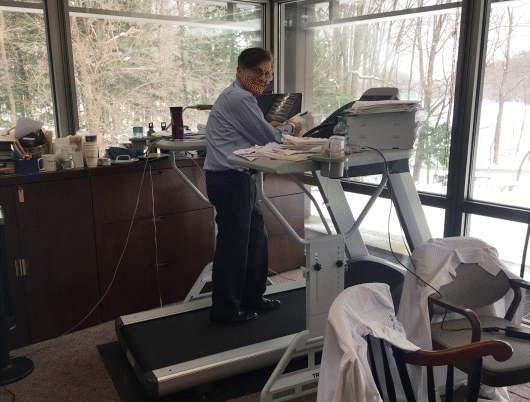
He and the Cleveland Clinic have many critics. That is true of every outlier we met. They attract sharpshooters from the ridges. But our MindShift approach likes projects that provoke critics. We like them for the same reason that musicians create tension with chord progressions that feel incomplete or chords that clash. That dynamic stimulates interest, engagement, and a sense of motion.
When I first entered Dr. Roizen's office, he was walking on a treadmill, talking on his cell phone, and shuffling papers on his standing desk. He waved me to a chair at a table piled with reports. My quick glance around the office took in stacks of paper, boxes of reports, awards, photos, and books. His corner office gave a sweeping view of the grounds of the Cleveland Clinic's Wellness Institute.

Figure 1.2 Dr. Michael Roizen, chief wellness officer for the Cleveland Clinic.
The interview started with his brief history of the deadly perils encountered on the road to career prosperity and convenience. It seemed that he too was once a cowboy, stopped dead in the road by a gathering storm.
“We know exactly when this rise of chronic disease started, 1983. We (adults) ate 2,340 calories, plus or minus 60 calories, per day from 1858 to 1983. Then we started increasing 2% per year. We reached 400 extra calories per person per day by 2000. The problem now is compounded by a concurrent drop in physical activity. Fifty percent of Americans—woman, man, employed, unemployed, Hispanic, Asian, whatever—do less than 10 minutes of physical activity any day of the week. The average 65-year-old person is five-foot-seven and weighs 33 pounds more than the same average 65-year-old did in 1991. Our norms are screwed up. Obesity is now a norm.
If you look at Kaiser's data, individual out-of-pocket expenses have increased threefold and employer expenses have also increased. In the last 20 years, we looked at what medical costs did to productivity gains. Every dollar, every penny of productivity gains since 1994 has been used up by medical costs.
Dr. Roizen's data should be chilling to every business leader. It means that, as medical costs have eaten away profitability, businesses have been forced to run faster to simply stay even. That reality drains dollars away from development and innovation and quietly shifts management's focus. The $18,000,5 on average, companies pay per employee in 2018 for health coverage will, by 2023, increase to $25,245 per employee! And that is to cover a nonproductive cost. That is over $25 million for a company of 1,000 employees. At that point, companies must resort to draconian cost cutting just to cover lost ground.
Storm Details: The Mother of Wake-Up Calls
Dr. Roizen was, for me, the mother of all wake-up calls. That's because he so clearly sees and explains the most epic burning platform of all time. Until that meeting, I had never seen a true threat to the very existence of a business or our nation. We've all become numb to frequent hurricanes or droughts “of the century” and other catastrophic crises: climate change, terrorism, the Middle East, North Korea, Russia, etc. But, in our first three-hour meeting, Dr. Roizen clearly explained what the slow-moving storm of chronic disease was doing—and will continue to do—to people, companies, and nations. Three hours, one message with multiple supports and visual aids. Stories, graphs, charts, videos, and report after report. Listening to Dr. Roizen was like drinking from an open fire hydrant.
He made a compelling presentation—no, that's not correct; he scared the hell out of me with his description of federal spending on health care. If the current rate keeps up, by 2050 almost 40% of GDP will be required to cover our health costs, plus doubling federal income taxes to pay for the government's portion of health costs. A 2000 RAND report projected that chronic illness would grow to reach 50% of the population by 2025.6 We soared past that metric in 2012.7
To get a sense of the power of Dr. Roizen's three-hour presentation to me, please watch his message to the 2017 Global Wellness Summit.8 He gave them the short version of what he gave me.
The one-on-one presentation he gave me blew me back in my chair; a knot began growing in my stomach. I could not wrap my head around his doomsday scenario. Before I could ask the “Yes, but…” question, the fire hydrant opened again.
“That's actually not the real data,” he continued. “It only takes into account the normal aging of the population. Notice it doesn't include any influx of chronic disease. When you add the rise of chronic disease, it means between 2023 and 2025 we will hit that point which is undoable. We will have to bend the curve with a worldwide effort on the scale of a Marshall Plan!”9 The chart represented in Figure 1.3 was adapted from the slide deck he used at the Global Wellness summit.
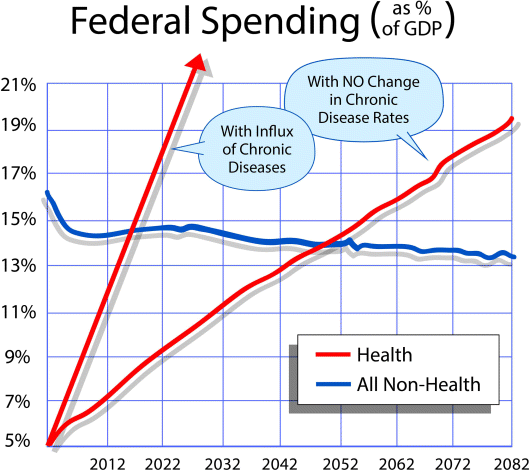
Figure 1.3 Influx of chronic disease.
He was clearly suggesting profound societal convulsions, the kind of economic instability never seen on a large scale in the United States.
He explained that chronic disease drives the logic for such a massive mobilization:
Look; hip and knee arthroplasty; 67,000 in 1974. We recently surpassed a million, and the prediction is going up sixfold with only a 30% increase in the population. Alzheimer's spending goes from $216 billion to a little over $1 trillion in today's dollars by 2050. Let's go back to the first curve I showed you and look deeper at the numbers for Type 2 diabetes. There were 2.2 million patients in 1974 when I started to practice. In 2015, it reached 30 million. You can see it will continue to rise more than 50% to close to 55 million people over the next 15 years. Our genes haven't changed. Our lifestyles have. Chronic disease causes 84% of all health costs; 67% occurs in the working population. We used to say that 50% of medical costs come in last year of life. It isn't that way anymore because we're spending so much to get to the last years of life.10
Finally, Dr. Roizen explained why business leaders must become their own chief wellness officers; they cannot relegate oversight of this to HR departments alone. Companies have a unique opportunity to reverse this trend because of the millions of people they directly touch daily and then indirectly touch when employees return home. However, using wellness programs to combat chronic disease doesn't work alone. He boiled it down to one mission on pursuit: “Our job is to develop healthy employees who bring energy to work. That's the only way the corporation can survive.”
When he finished (only because I had to catch a flight), my lens on the world was permanently altered. I felt like the kid in the movie Sixth Sense, seeing realities that remained invisible to others. Although I don't “see dead people,” I do see them (as individuals, families, employees, whole workforces, and communities) on a conveyor belt passing through predictable medical crises and then moving into the inevitable jaws of death.
Our Personal Python
Mark Benden, department head and director of the Ergonomics Center at Texas A&M, is on a mission to get you and me up out of our comfortable chairs and move. He understands another effect of the coming storm.
Mark told me that the average office worker can sit for 13 to 15 hours a day. Even going to the gym for 30 minutes a day won't offset the damage that prolonged sitting or inactivity imposes on our endocrine, immune, cardiovascular, and digestive systems. Simply standing up activates those systems and helps to rebalance blood sugar levels and triglycerides. At a bare minimum, we should sit no more than 50 minutes at a time before taking a 10-minute walking break.
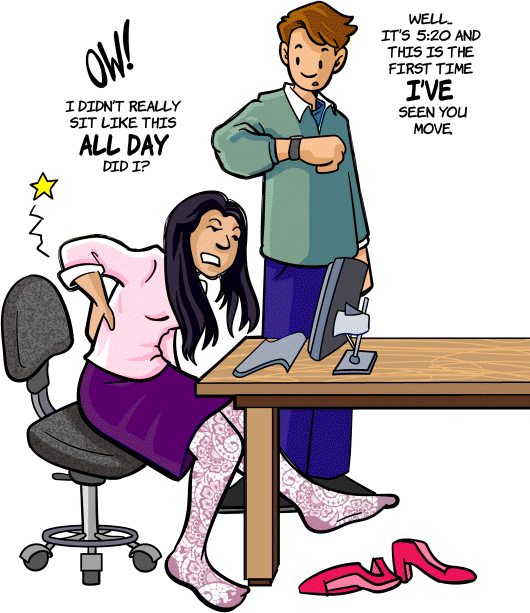
One of Mark's studies found obese elementary students experienced greater fluctuations in blood sugar when seated. But standing desks helped them, and those with ADHD, to pay greater attention and perform at the same academic level as the rest of the class.
Employers face an immediate challenge with the Millennials in the workforce and Digital Natives entering the workforce. Mark explains:
You and I were 150 pounds when we graduated from college. We were in good shape, and good to go. After a few healthy (and low-cost) decades, our employers may have to deal with some of our health problems in our 60s.
But, with many college graduates today already coping with obesity, their companies will be hit with the employee health problems much earlier. They will have to deal with employees in their 40s facing 25 years of seriously declining health and rapidly increasing cost. If you come out of college at 220 pounds and throw another 40 pounds by retirement, 260 pounds is a whole different dimension.
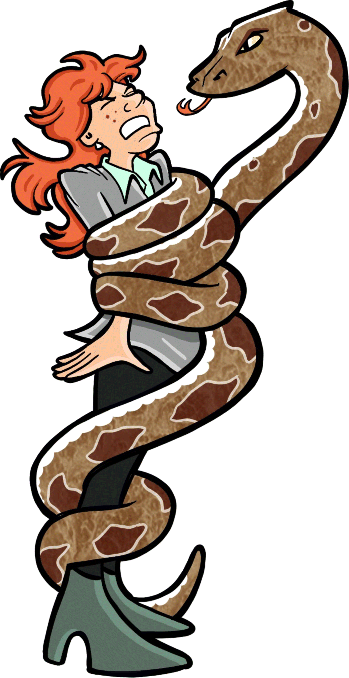
Mark talked about medicine now reaching a point where we measure quality of life years (QALY). Like a Kelley Blue Book valuation for life, you look at the age and then discount it based on miles and damage. 1 QALY is equivalent to a year of perfect health. It is an economic tool to help compare the cost of medical intervention with the remaining years the intervention is projected to add. In light of Dr. Roizen's doomsday scenario, we are surely headed for inevitable and severe health rationing. And, as chilling as it sounds, our economic survival will make life-and-death decisions, and make them quickly and efficiently.
Just Five Things
I asked Dr. Roizen, “Is there hope?”
“The data are pretty clear. We need to achieve what I call five normals (these have recently been expanded to 6+2 and will be explained in Chapter 13). They include blood pressure less than 140 over 90, LDL cholesterol levels under 100, a waist less than half your height, blood sugar under 100, and zero nicotine! In the 28-year Nurse's Health Study, in the Swedish Men Study, and in the Medicare studies, just five things would reduce chronic disease by 80% and 90%: reduce toxins (drugs and alcohol), manage stress, increase physical activity, improve food choices and portion size, and improve sleep. But, only 2.7% of Americans do even four of the five!”
We're sleeping with a python.
Most people believe that pythons kill their prey by crushing them to death. They don't. They constrict their victims so that when the prey exhales to catch its next desperate breath, the python silently squeezes all the remaining space out of the lungs. Each breath pulls in less and less oxygen. It is slow, efficient, and terrifying suffocation. Pythons feel the heartbeat of their victims. When it stops, they know it's dinner time.
That same constricting process also applies to people, businesses, and nations. A Kaiser Family Foundation chart shows that National Health Expenditures have doubled every decade since 1960, more than double the rate of inflation. We cuddled up with this killer, not realizing it is in deadly sync with all our contractions in national productivity, innovation, and growth.11
In the 1970s, Dr. Roizen's economics professor projected health care costs would increase from 7% of GDP to 12% by the year 2000. And that additional cost burden would drive manufacturing out of the country. The United States hit that 12% a full decade earlier.
When productivity gains are continually nullified and health costs rise faster than profits, we will know, as surely as a gazelle being suffocated by a python knows, the full details of an unrelenting and lethal crisis.
So, what can we do in the face of that crisis? Think of the gathering storm as a hurricane. We live in its path. Will we buy sheets of plywood to board up the windows of the neighborhood houses? Will we join the brigade of volunteers filling bags of sand for the river banks? Or will we, as some always do, dance the night away out on the pier? Can we take the quick and sure steps necessary for survival, or are we doomed to be destroyed by that monster?
We believe we have time and the tools to avoid disaster. And we hope others will join us in that conviction and that quest. The remaining chapters of this book will give you the stories, tools, models, and vision that could galvanize a corporate and national response to this very real and epic collision.
